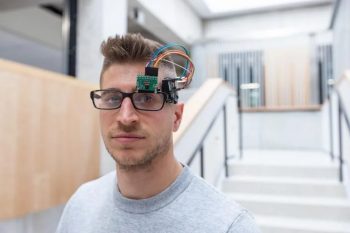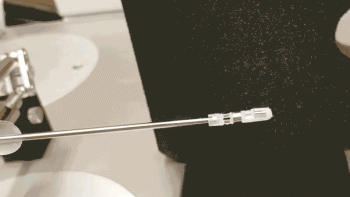Researchers at the University of Toronto Robotics Institute and The Hospital for Sick Children (SickKids) have teamed up to develop a new treatment option for patients diagnosed with glioblastoma (GBM).
Glioblastoma is the most common and aggressive form of brain cancer; the average life expectancy after a diagnosis is around 15 months.
Professors Yu Sun (MIE) and Xi Huang (Molecular Biology) hope to change this dire statistic with the help of magnetically guided robotic nano-scalpels that can precisely target cancer cells and kill them. The team shares their findings in a new study published in Science Advances.
For decades, scientists have searched for ways to treat GBM, including conventional surgery, radiation, chemotherapy and targeted therapy. GBM cells quickly reproduce and invade nearby brain tissue and are notoriously difficult to eradicate by conventional surgery. These cells also develop resistance to chemotherapy or targeted therapy. As a result, patients usually relapse after undergoing currently available treatment protocols.
Sun and Huang believe that a mechanical nano-surgical approach targeting tumour cells could provide a new and effective treatment option.
Sun, who is director of the U of T Robotics Institute, has spent more than 20 years developing micro- and nano-robotic systems, including infertility treatment systems that can select sperm with high DNA integrity and inject it into a human egg. Huang, a senior scientist at SickKids, investigates the physical properties and mechano-electrical-chemical signaling of brain cancer to develop new therapeutic strategies.
Together, they designed a precision control system that applies a rotating magnetic field to mobilize magnetic carbon nanotubes (mCNTs) filled with iron oxide particles and demonstrated that mCNT swarms could be activated inside a single cell to function as nano-scalpels.
They showed that mechanical stimulations provided by mobilized mCNTs inside GBM cells disrupt cancer cells’ internal structures leading to cell death. Importantly, the team demonstrated that the nano-surgical treatment reduced tumour size and extended the survival of mice bearing chemotherapy-resistant GBM.
With evidence from multiple preclinical models confirming the effectiveness of their approach, the researchers are next optimizing the material compositions of mCNTs, the control strategy and the treatment protocol.

Dr. Xian Wang (MIE PhD 2T0) is the first author of the paper, a former post-doctoral fellow in Huang’s lab and a recent graduate of Sun’s lab, where he began this work building magnetic nano-tweezers. His work developing the nano-tweezers is what laid the research foundations for the nano-scalpels used in the current study. He recently joined Queen’s University as an assistant professor.
“In addition to physically disrupting cellular structures, mechanically mobilized mCNTs can also modulate specific biomedical pathways,” says Wang. “Based on this, we are now developing a combination therapy to tackle untreatable brain tumours.”
While there is still much research to conduct before human trials are initiated, this innovation in mechanical nano-surgery is giving patients, families, and the medical community hope that new treatment options are on the horizon for this otherwise untreatable disease.



